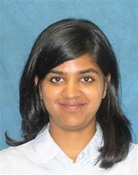IBSI-Compatible Convolutional Image Texture Filters in CERR
A Iyer*, E LoCastro, H Veeraraghavan, J Deasy, A Apte, Memorial Sloan Kettering Cancer Center, New York, NY
Presentations
PO-GePV-M-47 (Sunday, 7/10/2022) [Eastern Time (GMT-4)]
ePoster Forums
Purpose: Convolutional filters are useful in characterizing image texture and developing biomarkers. But cross-institutional reproducibility has been hindered by a lack of standardized filter definitions. The Image Biomarker Standardisation Initiative (IBSI) has recently proposed guidelines and reference values to overcome this issue. Here we present the convolutional filters available in CERR, revised to match the IBSI's recommendations.
Methods: CERR provides open-source implementations of six convolutional texture filters, viz. mean, Laplacian of Gaussian (LoG), Sobel, Laws, Gabor, and Wavelets. This codebase is compatible with both MATLAB and GNU Octave for license-free use and accessible in Python through the Oct2py bridge. CERR wrapper functions further extend access to additional filters distributed with SimpleITK and Pyradiomics. Filter response maps, computed using IBSI-supplied synthetic phantoms and benchmark parameter configurations, were found to agree with consensus results. CERR employs JSON-format input files to specify image pre-processing (resampling, quantization, re-segmentation, perturbation etc.) and filter-related (kernel size, orientation etc.) settings. Batch-mode tools for filtering and feature extraction are provided to facilitate outcomes modeling, and a graphical interface is available for visualization.
Results: IBSI-compliant convolutional texture filters are distributed as open-source, GPL-copyright software at https://www.github.com/cerr/CERR. A Jupyter notebook available at https://github.com/stratis-forge/radiomics-workflows/blob/main/demo_convolutional_texture_filter.ipynb demonstrates texture calculation following IBSI specifications. This example further shows the ability to execute Octave-based CERR functions from Python via the Oct2py bridge. Integration with CERR pipelines for data import and management, radiomics, and deep learning enables the use of texture filters in outcomes modeling and development of auto-segmentation tools.
Conclusion: CERR provides standardized texture filters matching the IBSI guidelines, facilitating reproducibility and multi-institutional research.
Keywords
Image Processing, Software, Feature Extraction
Taxonomy
IM/TH- Image Analysis (Single Modality or Multi-Modality): Imaging biomarkers and radiomics
Contact Email



